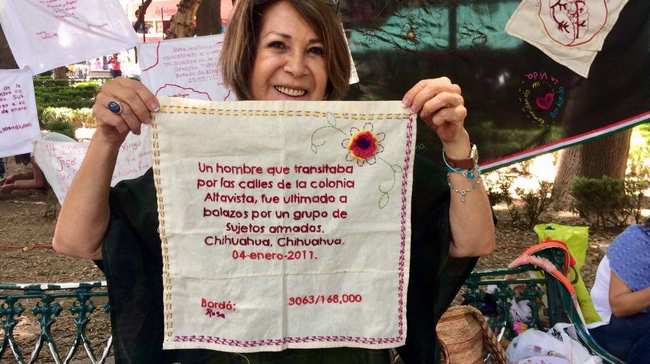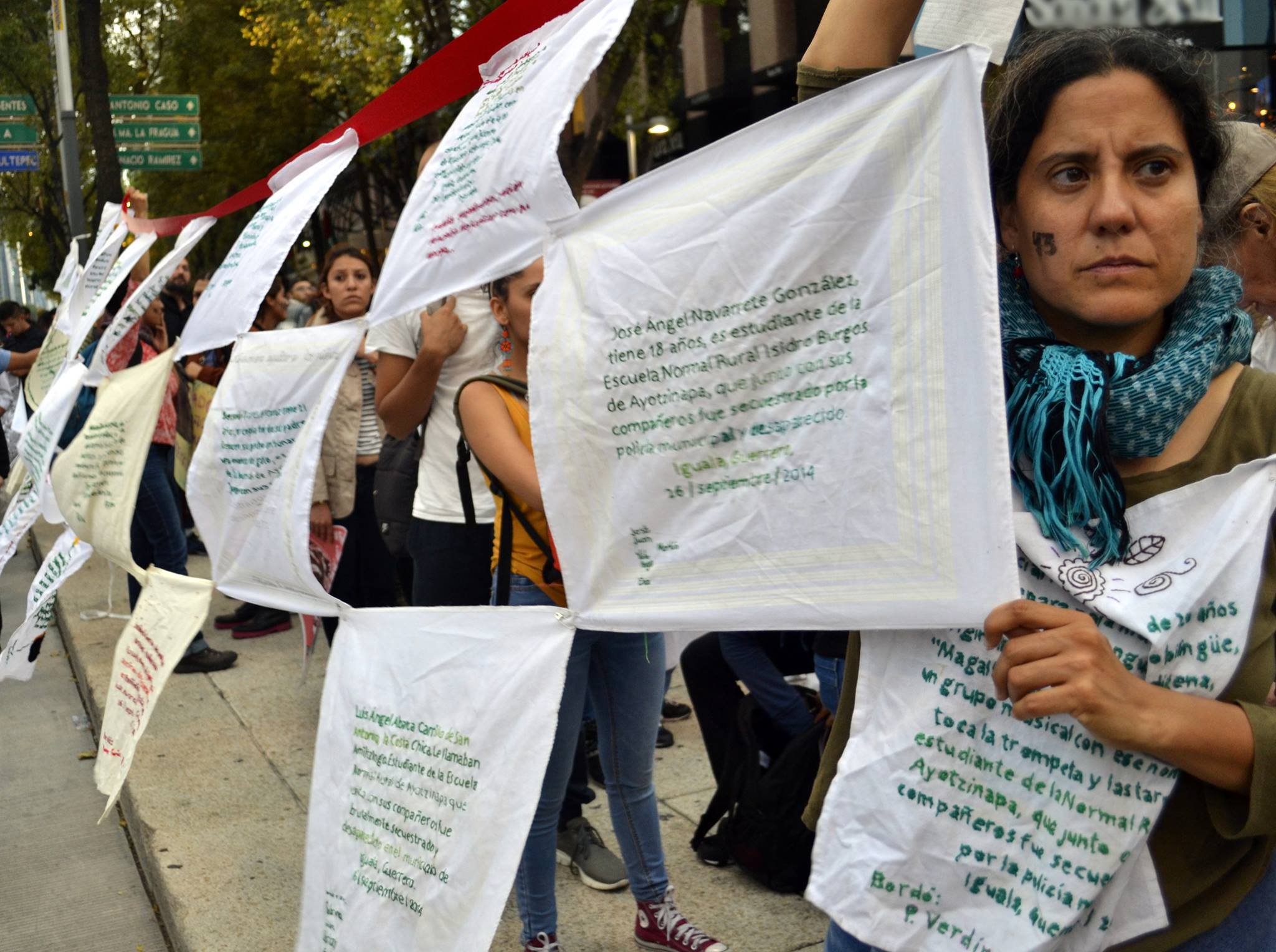Today our neighborhood parish church begins its week-long Fiesta Patronal in honor of the church's Patron Saint, San Mateo (Matthew). The festivities are accompanied by much fanfare, including processions and regular barrages of
cohetes — giant firecrackers, rockets.
 |
San Mateo Church Portada,
decoration of archway over main door |
The story of how
cohetes arrived in Mexico and our reflections about their contemporary cultural significance offers a rare glimpse into the complex, multi-dimensionality of Mexico's culture.
The celebrations of Mexico's indigenous peoples prior to the arrival of the Spanish were noisy affairs involving drums, rattles and war cries.
Meanwhile, in Europe, both gunpowder and the recipe for making it had arrived in Europe from China via The Silk Road sometime in the thirteenth century. Hence, Spanish soldiers were armed with muskets during their conquest of Mexico's original peoples.
Then in 1520, just one year after Cortés landed on Mexico's shores, two of his soldiers brought back from the crater of the volcano Popocatépetl the sulfur needed to make gunpowder.
Meanwhile, Franciscan Friars —
brought to Nueva España, New Spain, to evangelize the indigenous peoples — banned percussion instruments for being elements of pagan rituals. To take their place, the Friars introduced
stringed instruments. But
cohetes also made their way into the mix.
Reed's hunch is that the
cohetes replaced the enormous drums employed by the Aztecs in their religious ceremonies to ensure that the gods were paying attention. So when the Spaniards introduced gunpowder, the original people immediately adopted it to their own customs —
to non-Mexicans, sometimes to startling effect.
Several years ago, during the fiesta of the Holy Spirit in Pátzcuaro, Michoacán, we attended a High Mass celebrated outdoors in a traditional Purhépecha community near Pátzcuaro. We noticed the cohetero, man who sets off cohetes, standing no more than twenty feet from the priest. At the Elevation of the Host, the cohetero set off a barrage of cohetes.
Startled, we jumped, but neither the priest officiating at the Mass nor the congregants seemed fazed. We were later told that cohetes are set off to get God's attention — almost certainly a legacy of pre-Spanish ritual beliefs.
Thus is the stage set for an article by Francisco Ortiz Pinchetti, a journalist who founded
Proceso magazine, a widely read Mexican weekly.
A forty-year veteran observer and reporter of Mexican society, Pinchetti is also the author of
De pueblo en pueblo: crónicas del pequeño México (2000). In Spanish the word
pueblo refers both to the people (
el pueblo) and the place (
pueblo or village) where the people live. Hence, the title might be translated as "
From People to Village: Chronicles from Little Mexico."
Here's my translation of part of the article:
"Many residents in the upper middle class neighborhoods of such Mexico City boroughs as Coyoacán, Benito Juárez, Álvaro Obregón and Miguel Hidalgo get all stirred up by the barrages of cohetes that go off each time there's a fiesta in a church in these districts. This is particularly true where there are indigenous enclaves whose elderly inhabitants and their descendants preserve the tradition. The newcomers say they don't support the tradition, complain they cannot sleep and claim it's illegal to set off cohetes.
"Last weekend was an ordeal for them, since few fiestas are like that of the Holy Cross celebrated with a scenario comprised of a fireworks display. Moreover, [on International Worker's Day] the noisy celebrations of construction workers at their work sites (which always involve cohetes y cuetes [a play on words: rockets and 'loaded' (drunk) men]), coincides with the religious festivals in many churches dedicated to devotion of the Holy Cross on May 3.
"In neighborhoods like Santa Cruz Atoyac, for example, the barrages begin the preceding night, go throughout the night into the pre-dawn hours, persist throughout the day and finish up the next day. The newcomers say, 'What a horror!' Social networks are, of course, deluged with complaints.
"I must confess that I am addicted to pyrotechnics (not as a pyromaniac, mind you). I enjoy fireworks as few other things in life. It fascinates me to watch the night sky fill with bright, multicolored spangles. Sure, I love the now-computerized September 15 [Grito or Shout of Dolores at midnight before Independence Day, September 16] spectacular displays in the Zócalo, but I have a special fondness for — let's call them — 'artesanal' pyrotechnics set off by means of traditional "castillos" [castles], the "toritos" [little bulls] and "bombas" [bombs] in small-town fiestas and in our urban neighborhoods that still hold onto that enchantment.
"An inevitable part of all this are the barrages of the loud cohetes that are a completely indispensable part of any popular celebration in our country. Without them, a celebration just wouldn't be the same.
"In the neighborhood where I live, the feast of St. Lawrence the Martyr is celebrated each August 10 in the sixteenth century Franciscan chapel that still stands in the Saint's namesake park. And I must say that it thrills me to hear the first battery of cohetes announcing the celebration, even if they do waken me at five o'clock in the morning.
"Be that as it may, everyone can put up many reasons for or against this practice, which is as traditional as the questions raised about it. Personally, it seems to me that the matter has an irretrievable class bias that was, I believe, summed up, perhaps unwittingly, by one Karen (surely she lives in a luxury condominium) on her Twitter account.
"Last Sunday between barrages, Karen tweeted:
'Unfortunately, we are mixed in with closed-minded pueblo (village) and neighborhood people. It's all a matter of education.'
"God help us!"
Some Personal Reflections
Time to 'fess up. Reed and I live in a condominium in Coyoacán two blocks from the original pueblo of San Mateo. We enjoy the
cohetes, which is a good thing because we are treated fairly regularly to their barrages. Not only is the parish church just three blocks away, but we seem to be centrally located to hear the thunder from several other churches as well. We've come to accept the
cohetes announcing five o'clock Mass and heaven only knows what else as yet another part of Mexico.
As a practical matter, Mexico's indigenous and Spanish heritage peoples have struggled to find ways to live together. Through conversion and education the Franciscan Friars hoped to acculturate the indigenous peoples to Spanish ways, which involved learning to speak Spanish and follow
la cortesía ("the courtesy") — the elaborate code of manners governing personal behavior. Those who made the transition were called
ladinos.
One of our only reservations about moving to Mexico City was that we would lose touch with indigenous elements of Mexican culture. We've been surprised and delighted to discover that we needn't have been concerned — as Ortiz Pinchetti makes clear in his description of the Fiesta de la Santa Cruz [Feast of the Holy Cross] celebrated in the neighborhood of Santa Cruz Atoyac. The convention for naming neighborhoods illustrates the Spanish-Indigenous synchronicity:
Santa Cruz [Holy Cross] is the parish's Catholic patron saint; Atoyac is the indigenous place name.
The article's concluding paragraph is so loaded with cultural references that it almost deserves its own post, but for the sake of convenience, if not brevity, let me take a shot at it.
As former twenty-year residents of New York City, Reed and I are unrepentant urbanites. We thrive on the energy and cultural diversity of city life, but we're also very comfortable in rural settings. We've lived not just in New York City, but in rural and semi-rural communities as well. Maybe our experience has made us more aware of regional differences:
Northern California (where I grew up) versus Southern California; New York City versus Upstate New York (where Reed grew up); Fairfield County versus the rest of Connecticut.
It's very similar here. People outside Mexico City speak of "
México,"
when they refer to their country's capital.
People born in Mexico City call themselves
capitalinos, people of the capital.
Like city people the world over, they tend to speak with a certain condescension about
las provincias, the provinces, by which they mean anywhere outside Mexico City.
Many in Mexico's middle and professional classes are not in touch with the indigenous elements of their culture. Almost like foreign tourists, they visit places like Pátzcuaro, Michoacán, to gain experience with this 'exotic' way of life.
Still yet another layer of cultural complication:
Mexico today faces the increasing Americanization of its culture, a phenomenon accelerated and strengthened by the Internet with its social media.
So here we find ourselves in a cultural tangle between modern Mexico and traditional, indigenous Mexico. Fortunately, we are not alone.
After the Mexican Revolution (1910-1920), Secretary of Public Education
José Vasconcelos (1921-1924) espoused a new, "modern"
mestizo (mixed blood, Spanish-Indigenous) and called for the cultural assimilation of all ethnic groups. In recent times, this philosophy has been attacked by Native North, Central and South Americans because of its negative implications for native peoples throughout the Americas.
In Mexico, the Zapatista movement in Chiapas and the defense of natural resources (minerals, oil, wind, corn, timber — all sought by transnational companies) on the ancestral lands of indigenous peoples across Mexico has stoked a fierce pride in indigenous culture. Part of the bitter conflict over the so-called Reform of Public Education enacted during the administration of Enrique Peña Nieto, 2012-2018, hinges on this very issue:
acculturation to modernity versus adherence to indigenous culture and values.
With this context firmly in mind, we now return to the concluding lines of Ortiz Pinchetti's article, where he cites the "
irretrievable class bias" epitomized in "
Karen's" tweet:
'Unfortunately, we are mixed in with closed-minded pueblo (village) and neighborhood people. It's all a matter of education.'
Ortiz Pinchetti concludes his article with a heartfelt plea,
"God help us!"
Karen's tweet has all the elements:
this thoroughly modern Mexican woman finds herself and her friends "mixed in with close-minded pueblo [indigenous] and neighborhood peoples"; that is, with those who insist on maintaining the original, indigenous traditions of their people and their pueblo, or more stridently, those who refuse to accept 'modern' culture.
But most poignant of all is the last line of Karen's tweet:
"It's all a matter of education."
The educator José Vasconcelos would be proud.
But not so Francisco Ortiz Pinchetti, who in concluding "
God help us!" gives us outsiders a brief peek into the depths of a profound split in Mexican society and culture.















